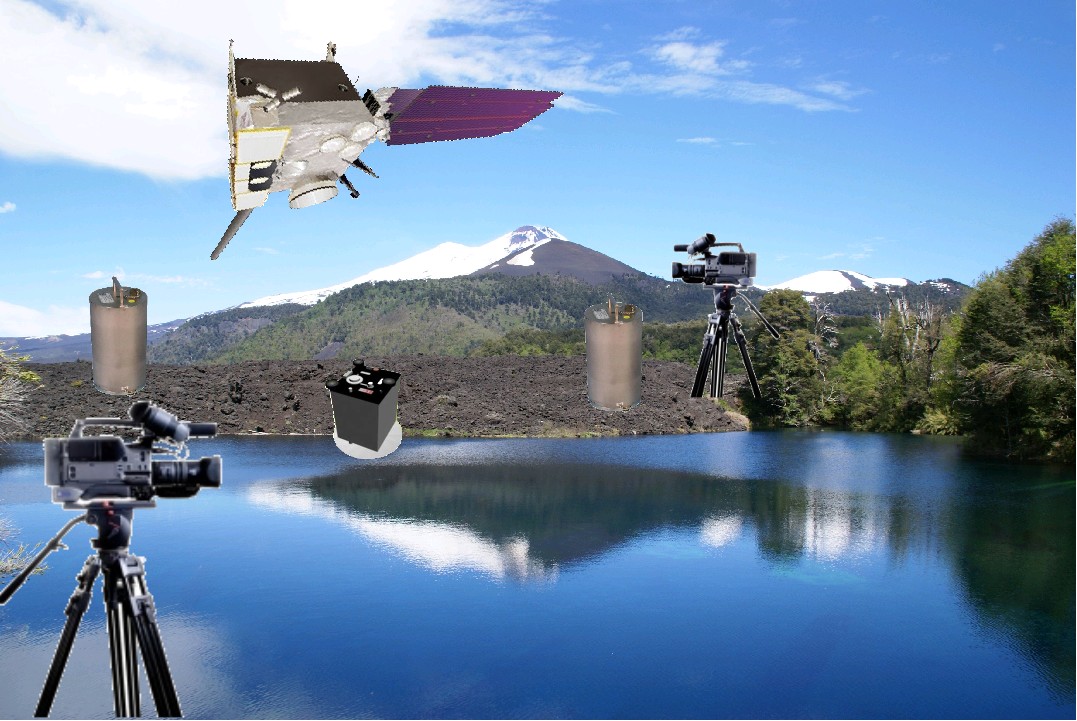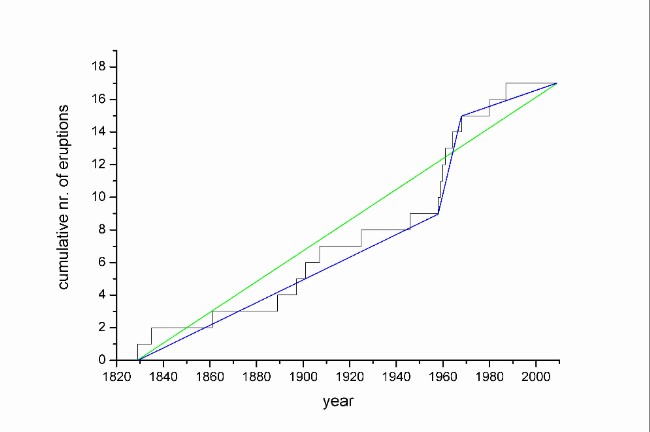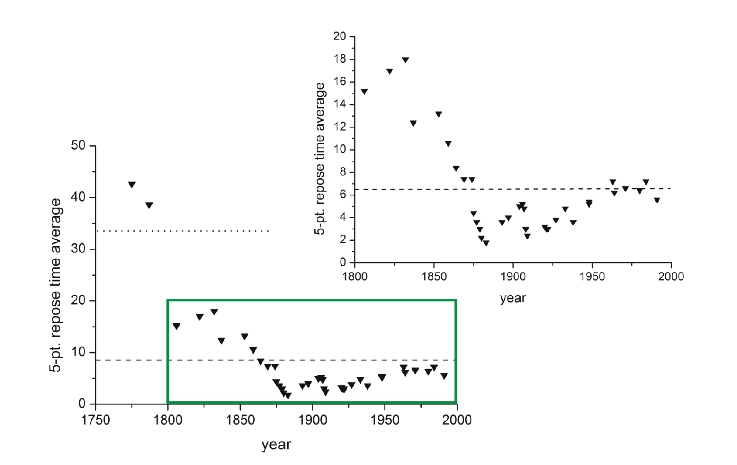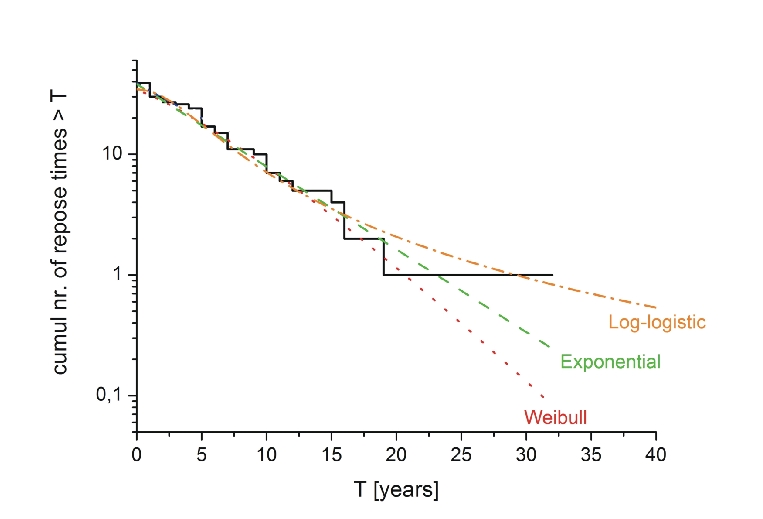 Web Content Anzeige Web Content Anzeige
On the likelihood of future eruptions
Beyond the immediate volcano surveillance, it is pivotal to estimate the probability of an impending eruption. This is done with the help of statistical techniques.
Eruption time series analysis Historical and geological eruption records of a volcano are subjected to statistical lifetime and failure analysis to determine the likelihood of future eruptions.
The analysis can be performed provided that several pre-requisites are fulfilled: (1) the record is sufficiently comprehensive to grasp the volcano's chronologic behaviour; (2) successive eruptions have to be independent of each other, which can be tested by calculating the correlation between successive repose times (i.e. the time intervals between the onsets of successive eruptions); and (3) the eruption time series have to be stationary, which means the statistical properties of any portion of the data set are identical, no matters which time period is considered.
Subsequently, several distribution functions, such as e.g. an exponential, a Weibull, or a log-logistic function can be fit to the data. The exponential function is the most simple case and can be applied if the data follow a Poisson process. The Weibull distribution is a model of simple failure and can accommodate phases of increasing as well as of waning volcanic activity. The log-logistic distribution reflects a situation of competing processes, which often occur in volcanic systems. For example, continuous magma chamber replenishment and differentiaten may contribute to increasing the likelihood of an eruption, while contemporaneous quiescent degassing may reduce pressure and relax the system, thus lowering the eruption probability.
Some rerefences
|
 Events Events
Kieler Wissenschaftler fühlen den 'Puls der Erde' Wie funktioniert die Recyclingmaschine der Erde?Nach elf Jahren endet der Kieler Sonderforschungsbereich 574 zu Subduktionszonen Final colloquium of SFB 574 Teilprojekt ÖffentlichkeitsarbeitMEERESFORSCHUNG FÜR MICH UND DICH |
|
©SFB574 // Wischhofstrasse 1-3 // D-24148 Kiel // T. +49 (0)431 600 1413 // elange [AT] geomar.de










